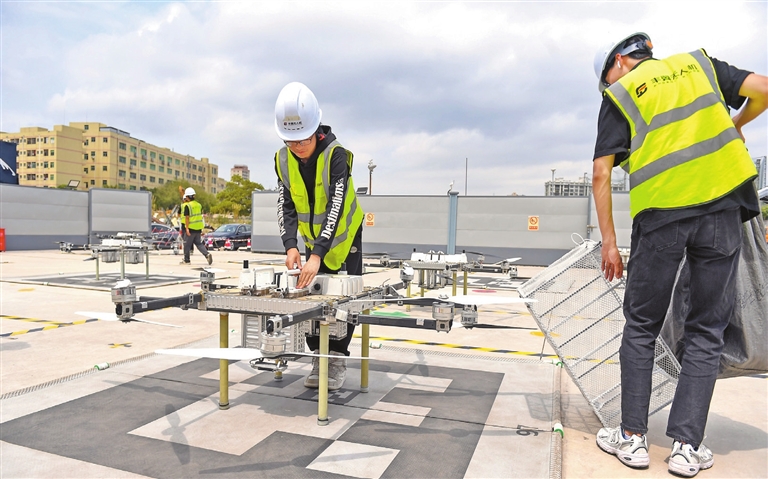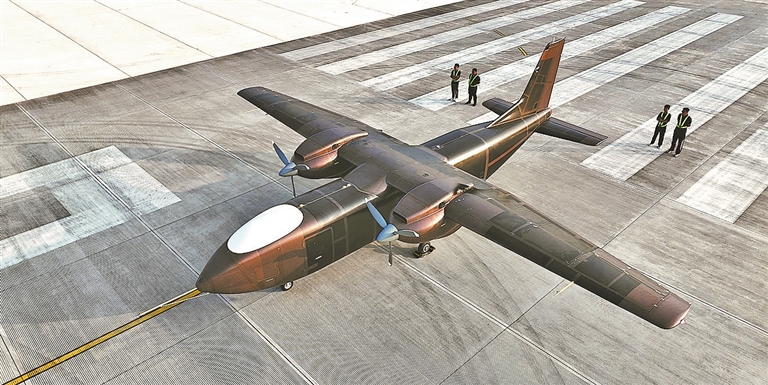

ENGINEERS sent China’s biggest-yet cargo drone on a test run over the weekend while a helicopter taxi took to the skies on a soon-to-open 100-km route to Shanghai, laying new milestones for the country’s expanding low-altitude economy. Packing a payload capacity of 2 metric tons, the twin-engine cargo drone developed by the Sichuan Tengden Sci-tech Innovation Co., Ltd. took off in southwestern Sichuan Province on Sunday for its inaugural flight that lasted approximately 20 minutes, the China Daily reported. The drone offers 12 cubic meters of inner space for cargo. The Tengden-built drone, with a wingspan of 16.1 meters and a length of 13.9 meters, is slightly larger than the world’s most popular light aircraft, the four-seat Cessna 172. Sun Yanyang, general manager of commercial drones at Tengden, said the company will develop tailored variants of the drone to meet the demands of clients. Manufacturers in the world’s top drone-making nation are testing ever larger payloads while transport companies are planning air taxi services both manned and unmanned as China loosens airspace curbs and grants incentives to build up a low-altitude economy. Its aviation regulator foresees a 2-trillion-yuan (US$279 billion) industry by 2030, for a four-fold expansion from 2023. The Tengden trial run followed the maiden flight in June of a cargo drone developed by State-owned Aviation Industry Corp of China (AVIC), the leading aerospace enterprise. The AVIC's HH-100 has a payload capacity of 700 kilograms and a flight radius of 520 kilometers. Next year, AVIC plans to test its biggest cargo drone, the TP2000, which can carry up to 2 tons of cargo and fly four times farther than the HH-100. China has already begun commercial deliveries by drone. In May, cargo drone firm Phoenix Wings, part of delivery giant SF Express, started delivering fresh fruit from the island province of Hainan to southern Guangdong using Fengzhou-90 drones developed by SF, a unit of S.F. Holding. Cargo drones promise shorter delivery times and lower transport costs, industry insiders say, while widening deliveries to sites lacking conventional aviation facilities, such as rooftop spaces in heavily built-up cities. Unmanned aerial vehicles (UAVs) could also ferry people on taxi services. In April, aviation authorities issued a production certificate to UAV maker EHang Holdings, based in Guangzhou, for its passenger-carrying drone, known as electric vertical take-off and landing (eVTOL) vehicle, China’s first such certification for an autonomous passenger drone. The production certificate is a milestone for EHang, which is now allowed to mass produce EH216-S systems and further its commercial operations, said Hu Huazhi, its founder and CEO. The Chinese Government this year identified the low-altitude economy as a new growth engine for the first time, with vertical mobility seen as a new productive force in areas such as passenger and cargo transport. On Saturday, a manned commercial passenger helicopter took off for the first time from Kunshan, Jiangsu Province, to Pudong District’s Xingye aviation base near Shanghai Pudong International Airport, Xinhua reported. For one-way fares of up to 1,800 yuan, Shanghai New Sky Helicopter Co., Ltd. aims to cut travel time between the cities to 20 minutes from 1.5 hours. As many as 30,000 passengers a year are forecast to use the route, which will officially open this Sunday. Inter-city routes, including one from the cruise terminal in Baoshan to Pudong’s airport, are being planned, and Shanghai aims to expand low-altitude routes to cover other cities in the Yangtze River Delta, such as Taicang and Wujiang in Jiangsu Province.(SD-Agencies) | 
